They are fascinating
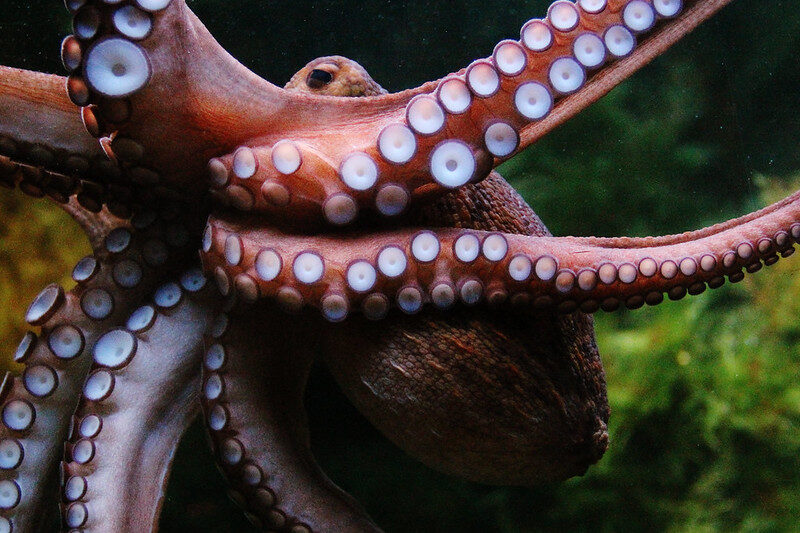
Octopuses aren’t just fascinating—they’re biological marvels that seem almost alien. With three hearts pumping copper-rich blue blood and a nervous system split between one central brain and eight mini brains in their arms, these creatures have evolved a design unlike anything else in the animal kingdom. This incredible anatomy gives them extraordinary abilities, from solving puzzles to shape-shifting in seconds. Here are 8 mind-blowing reasons why octopuses developed such bizarre, brilliant features.
1. Three Hearts That Never Miss a Beat
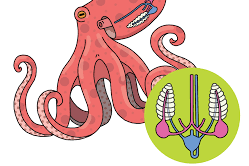
Octopuses have three hearts: two branchial hearts and one systemic heart. The branchial hearts pump blood to the gills for oxygenation, while the systemic heart circulates the oxygenated blood throughout the rest of the body. This larger, central heart then takes the oxygenated blood and circulates it to the rest of the octopus’s body, delivering oxygen to organs and muscles. This system ensures that despite their active lifestyle and high metabolic demands, their tissues receive a steady supply of oxygen. According to study.com, the separation of blood flow helps maintain efficiency, especially since octopus blood uses copper-based hemocyanin, which is less efficient than the iron-based hemoglobin in vertebrates.
2. The Mastermind Brain Behind It All
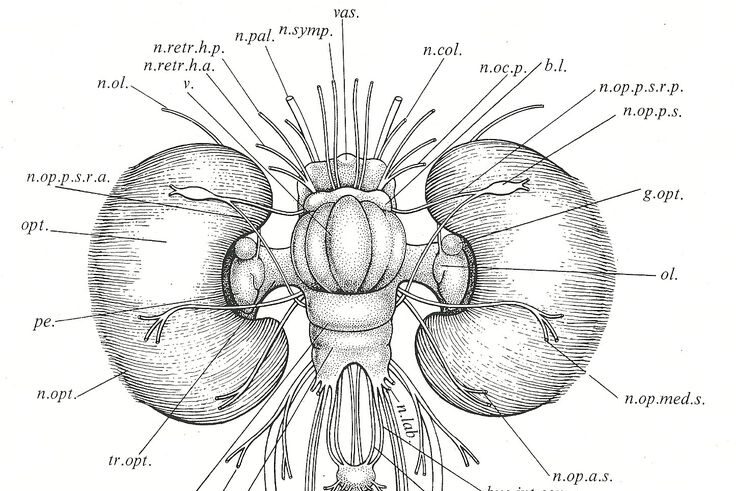
The central brain is located in the head, between the eyes, and contains a substantial portion of the octopus’s neurons, responsible for complex cognitive functions like problem-solving, decision-making, and learning. It acts as the control center for the central nervous system, integrating sensory information from the environment. While the central brain is significant, a notable feature of the octopus nervous system is the distribution of neurons throughout its body, including its eight arms. This distributed nervous system, with a significant portion of neurons in the arms, allows for independent arm movement and sensory processing. It also enables the octopus to exhibit remarkable behaviors such as camouflage, hunting strategies, and escape tactics. MDPI Blog notes that this centralized control is essential for coordinating the animal’s sophisticated movements and interactions with its surroundings.
3. Eight Mini Brains That Think on Their Own
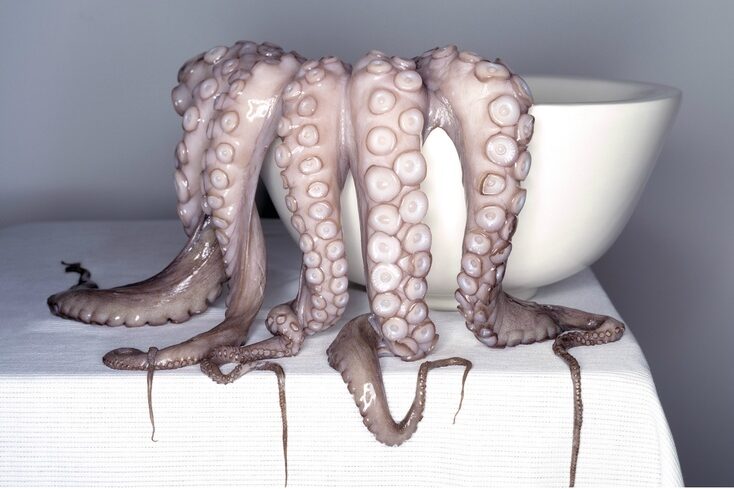
Each of the octopus’s eight arms contains a mini brain or ganglion, which allows for a high degree of autonomy. These mini brains can control movement and respond to stimuli independently of the main brain. This decentralized nervous system means an octopus can multitask effectively, such as exploring different areas simultaneously or manipulating objects with precision. I.e., Even when severed from the central brain, octopus arms can still respond to stimuli, demonstrating the independent function of the mini-brains. They can move, grasp, and even attempt to move food towards a mouth that’s no longer there.SCI-AM adds that these mini brains also allow the arms to react quickly to threats or opportunities without waiting for instructions from the central brain.
4. Arms That Feel, Think, and React Instantly
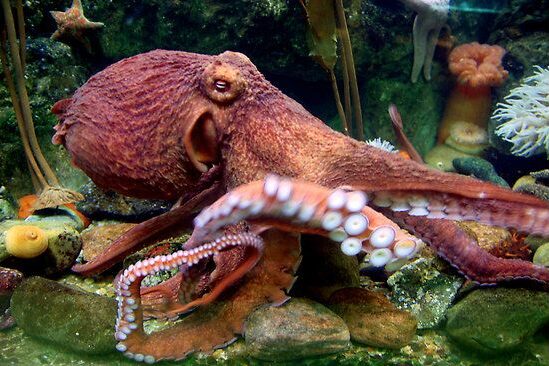
The “mini brains” in octopus arms (specifically, the arm ganglia) are not just for motor control, but also for sensory processing. Each arm is equipped with numerous sensory receptors that detect various stimuli like touch, chemicals, and texture, allowing them to respond independently to environmental cues. This decentralized processing enables the octopus to perform complex behaviors without relying solely on the central brain. This local processing enables the arms to “feel” their environment and make immediate adjustments, which is crucial for hunting prey or navigating complex underwater terrain. That is, they can detect touch, pressure, and vibration, and they can also detect chemicals in the water, allowing them to sense prey or danger. Frontiers also highlighted that this remarkable ability gives the octopus a unique way to interact with its world.
5. Built for the Toughest Oceans
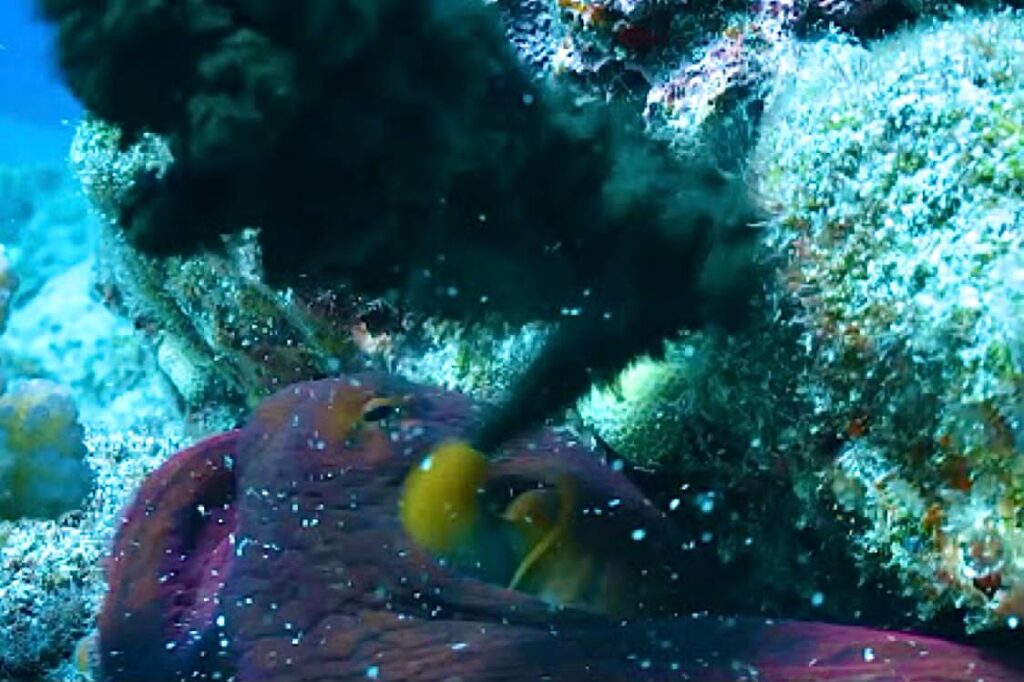
The combination of three hearts and multiple brains is an evolutionary adaptation to the octopus’s complex and often challenging marine environment. This system, combined with their blue blood (which uses copper for oxygen transport), allows them to efficiently deliver oxygen to their muscles and organs, especially in low-oxygen environments which supports their active hunting lifestyle, while the distributed nervous system allows for sophisticated interaction with their surroundings. These features, along with their camouflage abilities, ink-squirt defense, and ability to regenerate lost limbs, are all examples of how octopuses have evolved to successfully navigate their diverse and often dangerous marine habitat.
6. A Power System Made for Speed and Survival
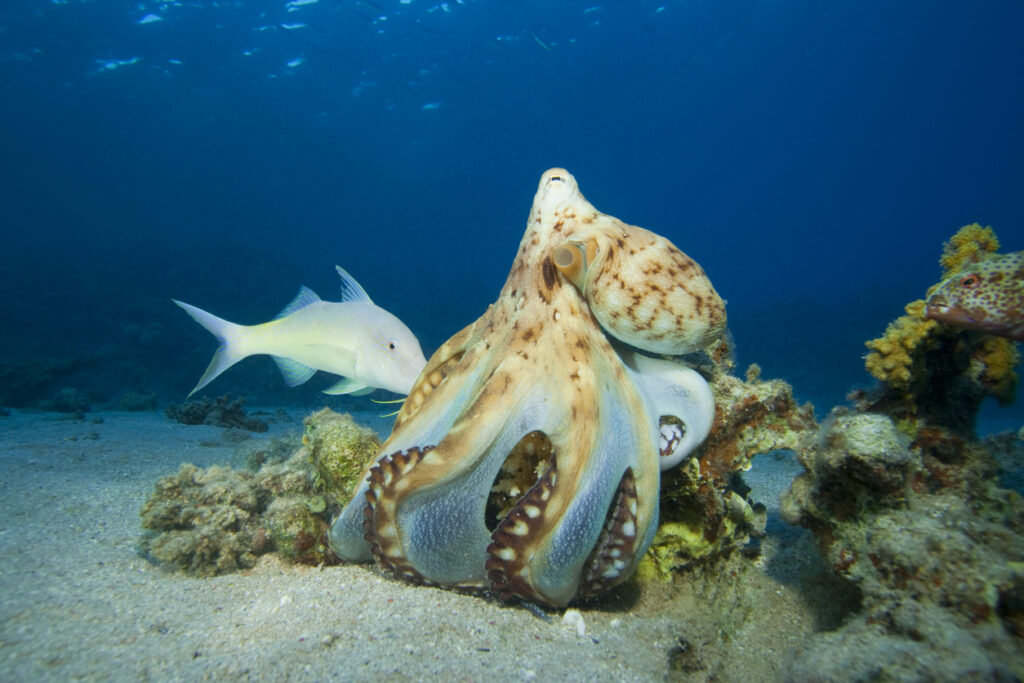
Octopuses are known for their bursts of speed and agility when escaping predators or capturing prey. The three-heart system supports this by ensuring oxygen-rich blood is delivered rapidly to muscles during intense activity. Meanwhile, the decentralized nervous system allows the animal to coordinate complex movements without overloading the main brain. While the systemic heart’s increased blood pressure helps with fast movements, it also becomes less active when the octopus swims. This is why octopuses often prefer crawling rather than swimming, as swimming can be energetically costly. This energy-efficient design supports their reputation as agile and intelligent marine animals.
7. Redundancy That Keeps Them Alive
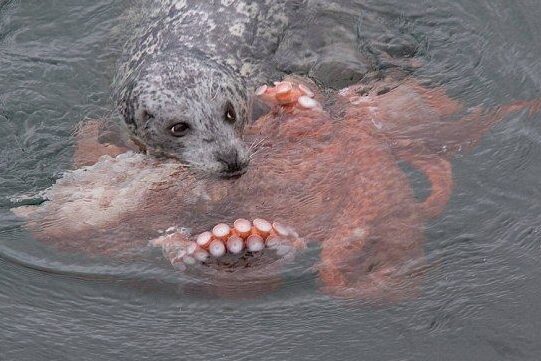
Having multiple hearts and brains also provides a form of biological redundancy. If one heart or part of the nervous system is damaged, the octopus can still function relatively well. This redundancy increases their chances of survival in the wild, where injuries from predators or environmental hazards are common such as those that might damage a heart or brain. The flexibility of their nervous system also means they can adapt their behavior quickly to changing conditions.
8. The Genius That Makes Them Nearly Alien

The unique anatomy of octopuses contributes to their evolutionary success as one of the most intelligent invertebrates. Their three hearts and distributed brains support not only their physical capabilities but also their cognitive functions. This combination allows them to solve puzzles, use tools, and exhibit behaviors that suggest a high level of awareness and learning. These traits make octopuses a subject of fascination and study in neuroscience and marine biology.
If you enjoyed this deep dive into octopus biology, stay curious and explore more fascinating animal adaptations with us!


